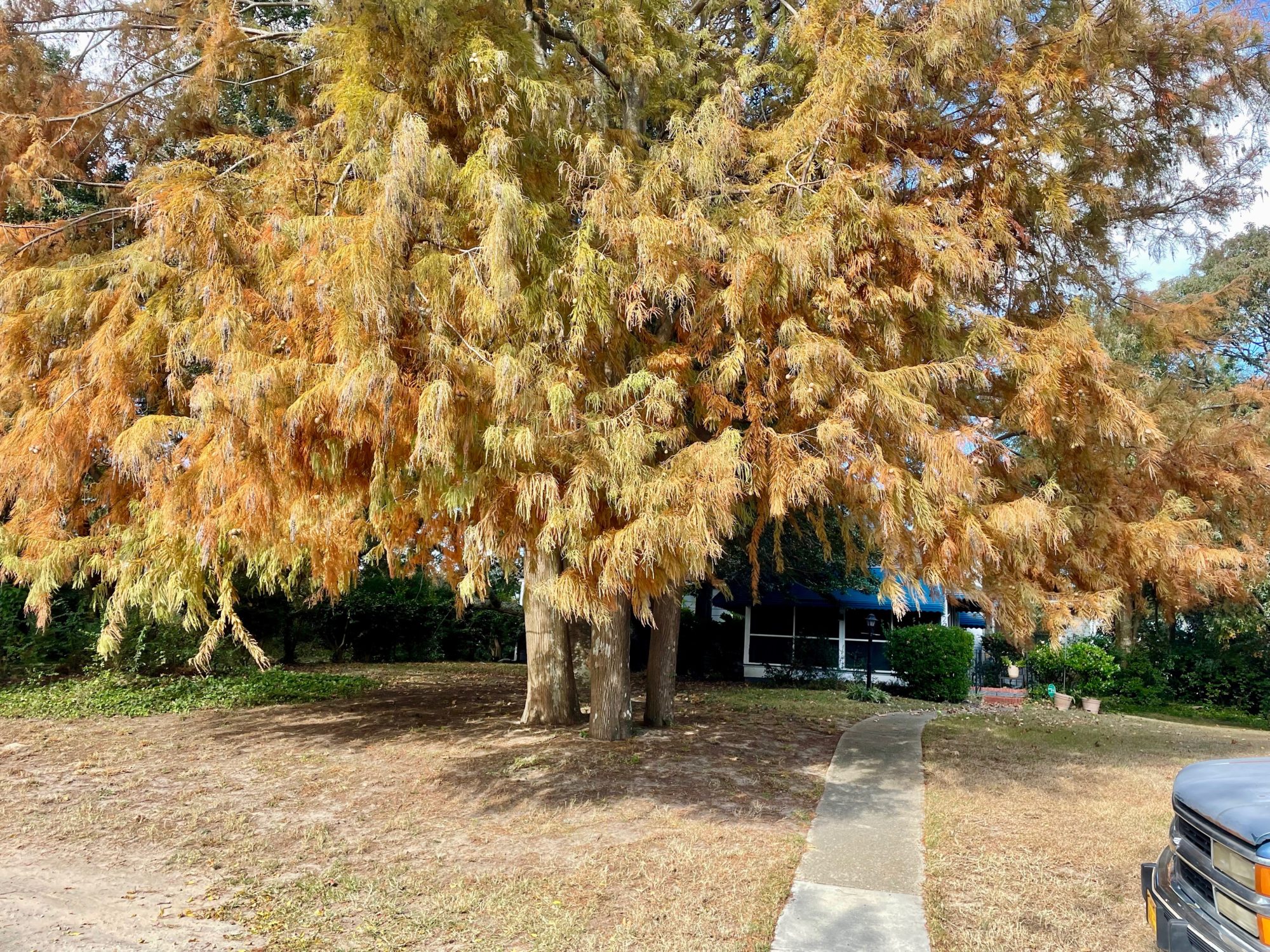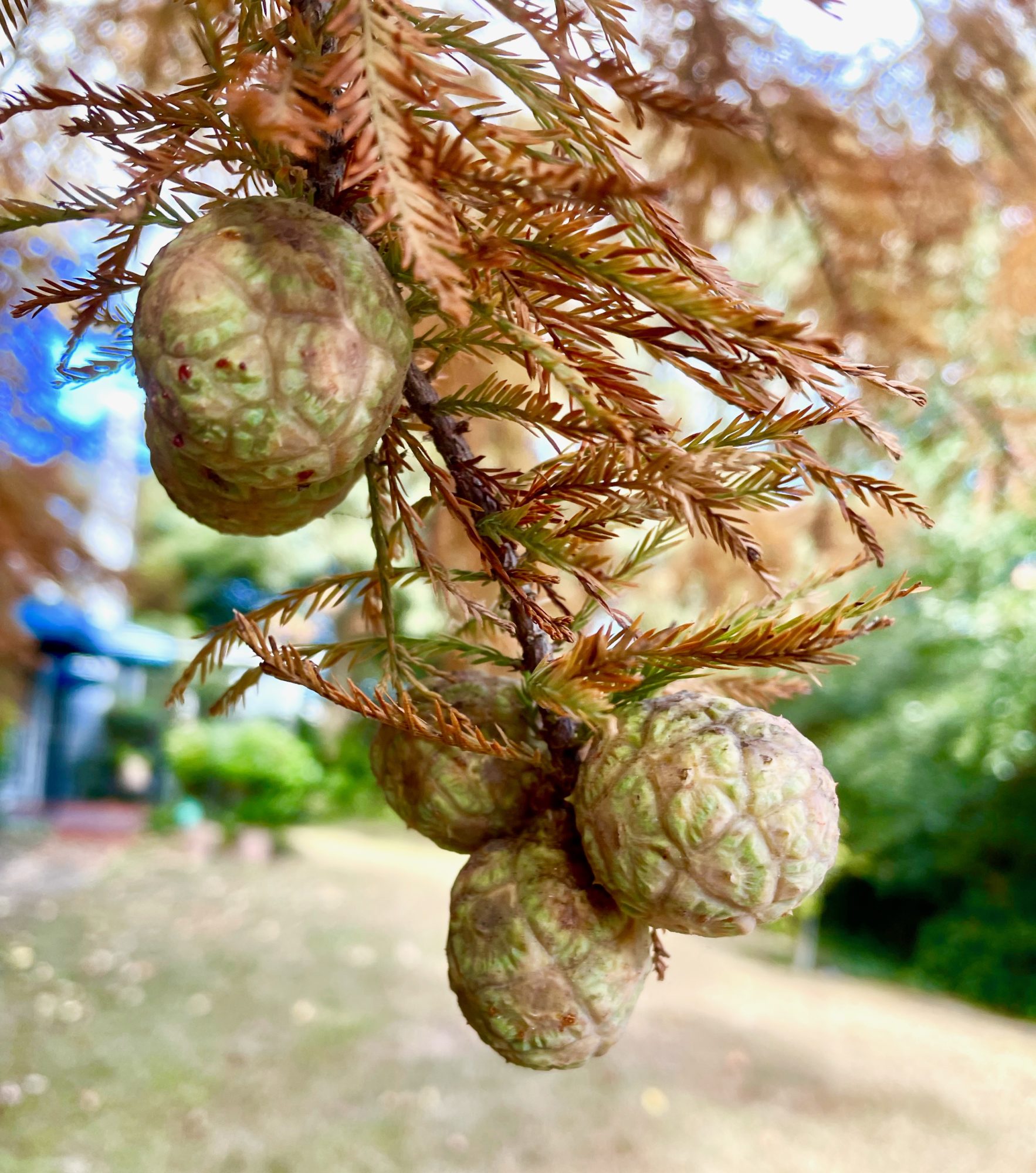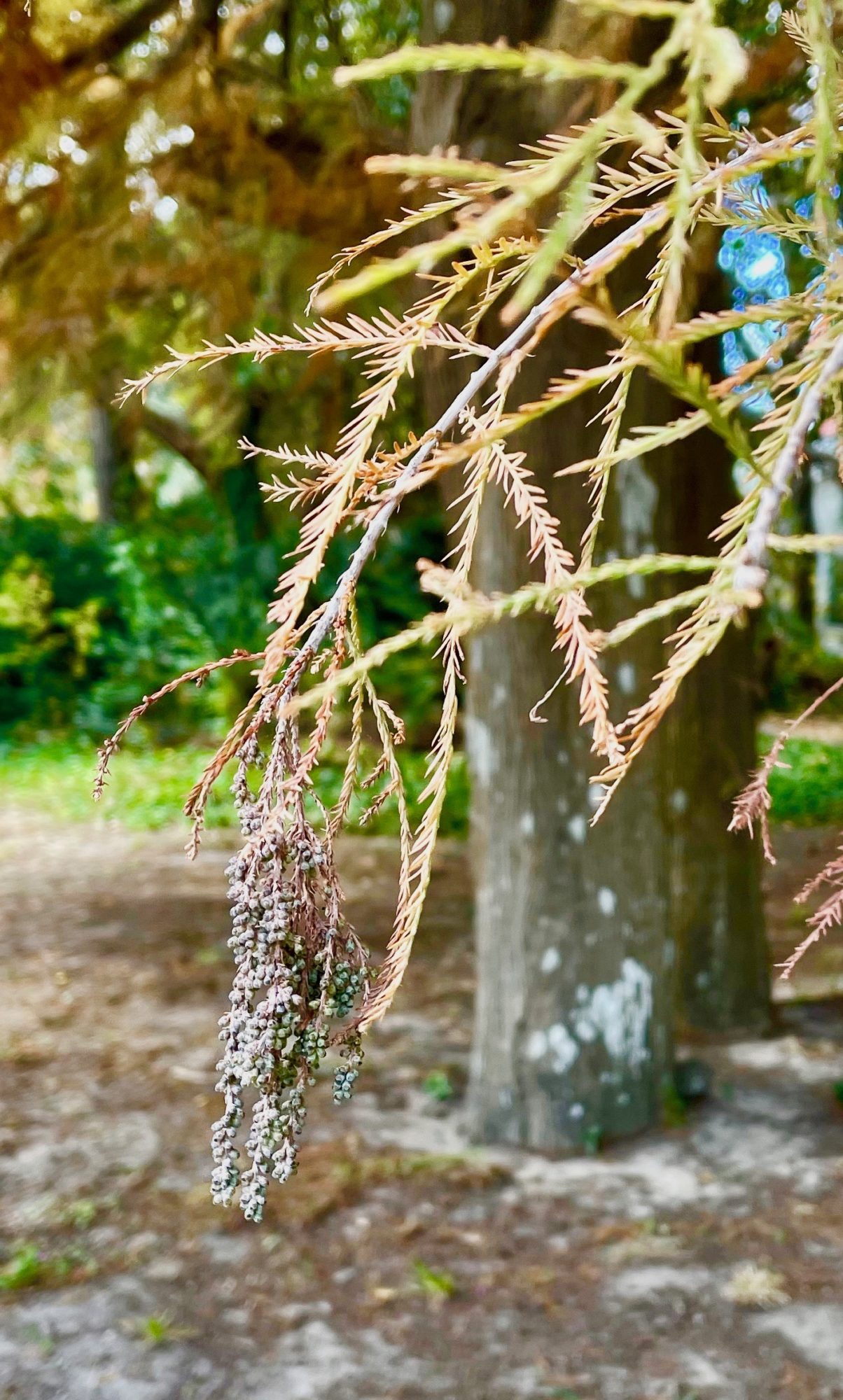By Mary Reid Barrow

It happens almost every fall. Someone walking down my street looks over at the cluster of huge bald cypress trees with their russet brown needles in the yard next door to me.
“The trees are dying,” he or she will say.
And I tell them no, they’re not. They are bald cypress trees and they are not like most other conifers, such as pine and cedars, because they loses their needles every year.
“That’s why it’s called a bald cypress,” I say.
Then If I can get them to stay around, I keep on talking about one of my favorite trees. There are so many curious and interesting facts about bald cypresses.
Next, I’ll tell them that I think this group of three trees is so special because of where they are growing.
They are not growing along the water’s edge, in the water or in swamps and wetlands where bald cypresses serve as a bulwark against flooding by absorbing flood waters. These trees are dry and very high. They grow in a yard between Atlantic Avenue and First Landing State Park on a little hill that was once part of a secondary dune line.
Since cypress seeds must have dry land to take root and grow, the trees are perfectly capable of growing in places such as my neighbor’s yard. But, I wonder, did someone plant the seeds years ago? Did a bird bring them? It’s almost as if a cone broke open right there, spilled its seeds and three cypress trees sprouted on a sand dune!
It’s also interesting to me that these bald cypresses don’t have knees, those conical shapes you see growing up around cypresses in ponds. Some botanists think the knees are structures the trees send up to give them stability in the water. But if you are growing on an old dune, where there’s no water to be seen, you don’t need knees!
Another thing I love about the bald cypress is its cones. They hang from the tip of a needle branch or in a group along the branch. They are round and smooth, with small irregular scale marks. At the end of the season they burst open and throw out seeds, maybe 50 or more.

Also hanging from the branches this time of year are sweet clusters of dried male flowers. They look a little like bunches of tiny grapes. Who would expect something so dainty on a tough bald cypress tree?

Soon those flowers will fall off the tree. The beautiful needles and cones will be gone. But come spring, curious walkers will see that the bald cypresses on the hill are alive once again.
Do you have a favorite tree or plant with a story to tell? What relationships have you observed between plants and critters? Who eats whom? Who has babies where? Send an email to maryreid@lrnow.org